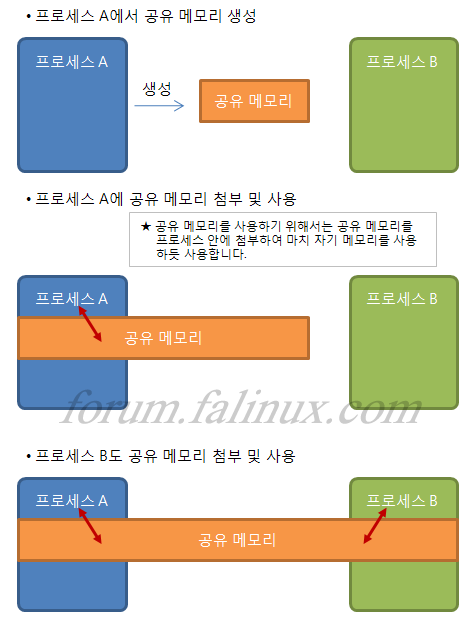2011. 9. 30. 19:35
커널 소스를 보다보면 asmlinkage로 선언된 함수들을 볼 수 있다.
asmlinkage는 어셈블리 코드에서 직접 호출(링크)할 수 있다는 의미이며
커널 소스의 <include/linux/linkage.h>에 다음과 같이 정의되어 있다.
그렇다면 어셈블리 코드에서 직접 호출할 수 있다는 것은 무엇을 의미할까?
일반적으로 C 함수는 어셈블리 코드에서 별 어려움없이 호출할 수 있지만
함수의 인자를 넘기거나 리턴값을 받는 부분 등의 호출 규약이 필요하다.
레지스터에 여유가 있는 ARM이나 MIPS 등의 아키텍처에서는
함수의 인자를 넘길 때 특정 레지스터를 사용하도록 호출 규약이 정의되어 있지만,
그렇지 못한 x86 아키텍처에서는 때에 따라 레지스터, 스택 혹은 별도의 메모리 영역에
함수의 인자를 저장하여 넘길 수 있도록 지원한다.
당연히 인자를 레지스터에 저장하여 넘기는 방식이 빠르기 때문에 (fastcall)
최적화 옵션을 켜고 컴파일하는 경우 인자를 레지스터를 통해 전달하도록
함수의 호출부와 구현부를 변경해 버릴 수 있다. (일반적인 최적화 방법)
이 경우 GCC를 통해 자동 생성되는 코드는 적절히 변환되므로 문제가 없을테지만
직접 작성한 어셈블리 코드에서 함수를 호출하는 경우 문제가 발생하게 된다.
이 경우를 방지하기 위해 어셈블리 코드와 링크되는 함수는
인자를 (레지스터를 이용하지 않고) 스택을 이용해서 전달하도록
선언하는 데, 이 때 asmlinkage가 사용된다.
위의 코드에서 <asm/linkage.h> 파일을 #include 하고 있는 것에 주의하자.
대부분의 아키텍처에서 이 파일은 asmlinkage를 정의하지 않지만
i386에서는 다음과 같이 정의한다.
regparm 속성은 레지스터를 이용하여 전달한 인자의 수를 지정한다.
asmlinkage로 선언된 경우 모두 스택을 이용하고 (레지스터로 0개의 인자 전달)
fastcall로 선언된 경우 최대 3개의 인자를 레지스터로 전달한다.
(이 경우 EAX, EDX, ECX 레지스터를 이용하며, 인자는 정수형이어야 한다.)
출처 : http://studyfoss.egloos.com
asmlinkage는 어셈블리 코드에서 직접 호출(링크)할 수 있다는 의미이며
커널 소스의 <include/linux/linkage.h>에 다음과 같이 정의되어 있다.
#include <linux/config.h>
#include <asm/linkage.h>
#ifdef __cplusplus
#define CPP_ASMLINKAGE extern "C"
#else
#define CPP_ASMLINKAGE
#endif
#ifndef asmlinkage
#define asmlinkage CPP_ASMLINKAGE
#endif
...
#include <asm/linkage.h>
#ifdef __cplusplus
#define CPP_ASMLINKAGE extern "C"
#else
#define CPP_ASMLINKAGE
#endif
#ifndef asmlinkage
#define asmlinkage CPP_ASMLINKAGE
#endif
...
그렇다면 어셈블리 코드에서 직접 호출할 수 있다는 것은 무엇을 의미할까?
일반적으로 C 함수는 어셈블리 코드에서 별 어려움없이 호출할 수 있지만
함수의 인자를 넘기거나 리턴값을 받는 부분 등의 호출 규약이 필요하다.
레지스터에 여유가 있는 ARM이나 MIPS 등의 아키텍처에서는
함수의 인자를 넘길 때 특정 레지스터를 사용하도록 호출 규약이 정의되어 있지만,
그렇지 못한 x86 아키텍처에서는 때에 따라 레지스터, 스택 혹은 별도의 메모리 영역에
함수의 인자를 저장하여 넘길 수 있도록 지원한다.
당연히 인자를 레지스터에 저장하여 넘기는 방식이 빠르기 때문에 (fastcall)
최적화 옵션을 켜고 컴파일하는 경우 인자를 레지스터를 통해 전달하도록
함수의 호출부와 구현부를 변경해 버릴 수 있다. (일반적인 최적화 방법)
이 경우 GCC를 통해 자동 생성되는 코드는 적절히 변환되므로 문제가 없을테지만
직접 작성한 어셈블리 코드에서 함수를 호출하는 경우 문제가 발생하게 된다.
이 경우를 방지하기 위해 어셈블리 코드와 링크되는 함수는
인자를 (레지스터를 이용하지 않고) 스택을 이용해서 전달하도록
선언하는 데, 이 때 asmlinkage가 사용된다.
위의 코드에서 <asm/linkage.h> 파일을 #include 하고 있는 것에 주의하자.
대부분의 아키텍처에서 이 파일은 asmlinkage를 정의하지 않지만
i386에서는 다음과 같이 정의한다.
#define asmlinkage CPP_ASMLINKAGE __attribute__((regparm(0)))
#define FASTCALL(x) x __attribute__((regparm(3)))
#define fastcall __attribute__((regparm(3)))
#define FASTCALL(x) x __attribute__((regparm(3)))
#define fastcall __attribute__((regparm(3)))
regparm 속성은 레지스터를 이용하여 전달한 인자의 수를 지정한다.
asmlinkage로 선언된 경우 모두 스택을 이용하고 (레지스터로 0개의 인자 전달)
fastcall로 선언된 경우 최대 3개의 인자를 레지스터로 전달한다.
(이 경우 EAX, EDX, ECX 레지스터를 이용하며, 인자는 정수형이어야 한다.)
출처 : http://studyfoss.egloos.com
'Developer's Infos > Linux Programming' 카테고리의 다른 글
| add_wait_queue()/remove_wait_queue()/schedule() 설명 및 사용법 (0) | 2011.10.10 |
|---|---|
| __attribute__ (0) | 2011.10.10 |
| [Shared Memory] shmget() 공유 메모리 생성 (0) | 2011.09.06 |
| PCI Driver Flow (0) | 2011.09.05 |
| [IP] IPv6 헤더, IPv4 vs IPv6 (0) | 2011.09.01 |












